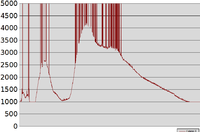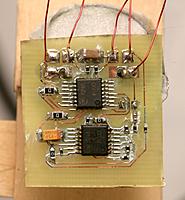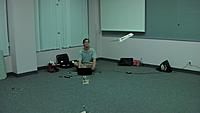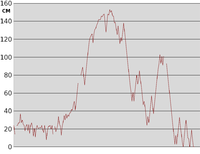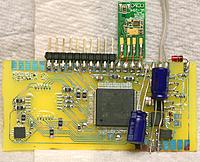Posted by Jack Crossfire |
Jul 29, 2012 @ 09:29 PM | 7,392 Views
Reflected sonar data is required for any 3D sonar system, so it's time to design 1 sensor to transmit & receive. The Maxbotixes are too directional. The Parralaxes are too heavy.
The mane problem with using 1 sensor & probably a mane reason why Parralax uses 2 sensors is 1 of the transducer leads has to be switched to an input to receive, limiting the drive voltage to the microcontroller voltage.
Your best bet is a motor controller which directly passes the input to the H-bridge, so you can generate rapid toggling & high impedance mode on 1 pin while grounding the other pin. None of the existing motor controllers seem to do that.
Another idea is driving it with its full peak-peak voltage in 1 direction only. A boost converter is required either way & it's cheaper. Mechanically, the transducer probably can't produce as much SPL with a half wave.
There is some diode magic which can be applied to op-amps to make them tri-state.
Finally, there is the Leap Motion solution. That seems to use 2 IR cameras to detect distance & oscillating IR leds to separate an object near the sensor from the background. It would have a lot of restrictions on its use in a space larger than immediately above the sensor. The larger the space, the more likely the LEDs can't separate the foreground from the background.
Dual cameras are still an intriguing option for vision. It would still require an expensive gimbal.
Posted by Jack Crossfire |
Jul 29, 2012 @ 03:45 AM | 7,533 Views
Because of the lack of jobs, the Marcy class aircraft have tended to shift more towards a product than an open source hobby.
15 years of doing 1 open source project or another have never yielded any career benefits from the open source aspect of it. They might care about the final product or the experience from developing it, but no-one ever offered a job because the source code was free & no-one who copied my source code to advance their job ever offered a pat on the back.
Part of the problem is it takes a lot more support than development for the open source aspect to gain enough popularity that it enhances your career. You have to be more of an organizer & the development has to be more in line with what the masses look for in other products right now, not a science project. Compromises like a 4Hz update when you'd like 30Hz or a clunky touch screen interface when you'd like a bulletproof tactile interface have to be accepted, because the platform has to be what the masses want right now.
In open source RC projects more than web servers, the developers tend to have jobs other than programming. They're competent enough at programming to make a career out of it, yet they're not offered jobs & they don't seem to seek any.
What seems to be happening is people who work on web servers are interested in software for its own sake. People who work on RC projects are using software as a tool to solve another problem that they're more interested in.
...Continue Reading
Posted by Jack Crossfire |
Jul 28, 2012 @ 08:20 PM | 7,519 Views
A lot besides sonar was done in the last 3 years, but the matter of making something bulletproof for an ordinary consumer requires revisiting it. The PCB fabrication has improved, since those days.
Jumper resisters of varying sizes have replaced most vias. Where vias are unavoidable, magnet wire has replaced wrapping wire. Chip capacitors have replaced through hole capacitors. ARM has replaced PIC. Single layer boards have replaced dual layer boards. They're lighter & cheaper when home made. Upside down etching has replaced manually shaking the acid. Leaving bare board has replaced flood filling, to reduce weight. Isolating solder points with small traces has given better solder balls. Having all connection points on the edge of the board has replaced scattering them throughout the board. Soldering molex connectors directly to the board has replaced umbilical wires. 1200dpi has replaced 600dpi. Landscape mode has replaced portrait mode, because the printer warps the long direction.
3D sonar using all 4 transducers for reception is the latest experiment. Surely, all these experiments have been done & given up on, before.
Posted by Jack Crossfire |
Jul 27, 2012 @ 02:00 AM | 8,247 Views
Had a rare opportunity to fly her in a large room, at a cost of $100/hour. For the 1st time, could see how stable she really is. She's so stable, manual flight with a keyboard is possible. The hardest part was controlling altitude. The autopilot still does a better job, even compared to a human with proportional sticks. It's a wonder humans still fly airlines.
...Continue Reading
Posted by Jack Crossfire |
Jul 26, 2012 @ 12:47 AM | 7,799 Views
Had a rare opportunity to fly Marcy 1 in a large room, at a cost of over $100/hour, revealing for the 1st time that she was extremely stable in every direction except altitude. Horizontal position holds really solid. Vertical position needs constant tweeking. Using a keyboard instead of a proportional stick made it very challenging to control altitude.
Also revealed was that the cyclic phase seemed to be different in the air than on the ground. It may have always been offset, but unnoticeable on the ground.
Horizontal position was super stable, yet translation was very effective. Pull the cyclic & she moved pretty fast. Center the cyclic & she stopped immediately, all without any electronic stabilization. The aerodynamics of Marcy class vehicles have certainly been hashed out.
Where the Picco Z rotor was the breakthrough in cheap cyclic damping which made toy copters popular, the next wave will be cheap altitude stabilization.
Sadly, autopilot in this room was a complete failure. It was certainly no fault of the aerodynamics. Something has gone wrong with the autopilot in the last 6 months.
The memory of being able to guarantee a stable takeoff, hover, & landing with every single autopilot run is still fresh. It was so reliable, I would walk around with a camera while the autopilot took off & hovered, unattended. It would be nice to work on getting back to that state, with the proven machine vision system, but financial reality dictates focusing on a better position sensing system.
Posted by Jack Crossfire |
Jul 25, 2012 @ 02:15 AM | 7,913 Views

Without Marcy 1, there would be starvation. The Marcy Mogul is insane, but when you need to pay the rent & she's the only way, there's no more budget for argument.
With rare access to a larger room, these aircraft have done some pretty impressive flying with preprogrammed horizontal translation & ground based vision. There are lots of problems with ground based vision & control, but when it works, it works.
The control problems definitely put you off of ever selling it as a product, but there is hope that the problems are manely with position sensing rather than the airframe design.
Posted by Jack Crossfire |
Jul 20, 2012 @ 02:45 AM | 7,795 Views
Quickly bringing the sonar airframe up to a minimal flying condition showed all those extra clockcycles & radios still didn't get sonar over the hill. It may have been marginally better, but already getting a Marcy aircraft to fly indoors showed it took absolutely glitch free, razor accurate altitude data. The problem with ground based sonar is not the range or the directionality, but it glitches.
Horizontal data seems good enough. There's definitely a future for it if it's combined with a straight down sonar for altitude. Straight down sonar would work, if an amplifier was put on the flight board. The processing would have to be done in software, since hardware to detect reflected sonar on 1 sensor has been patented out of existence. It may be patented in software, too.
Posted by Jack Crossfire |
Jul 19, 2012 @ 02:51 AM | 7,909 Views
With the next wave of electronics fitted & some new techniques to mount the transducer, there's hope sonar may work.
Posted by Jack Crossfire |
Jul 17, 2012 @ 10:42 PM | 7,983 Views
Now there's some hasty soldering. Only now do you remember you don't know the true camera dimensions. Took 8 hours for the fabrication up to this point. It was harder from using the wrong size components. Hand soldering is no way to mass produce it, but if the demand is under 20, hand soldering may be good enough. Having only a single layer makes it big.
Can't remember a board revision this easy to bring up. Having all those luxurious ARM features is a lot easier.
Posted by Jack Crossfire |
Jul 17, 2012 @ 03:50 AM | 8,779 Views
So laser printed boards require 2 transparencies to get enough darkness. After having many fine pitch boards come out bridged because the laser printouts on 2 transparencies never lined up, it became clear that the printer couldn't replicate the exact same size on 2 printouts.
After printing out a very long & narrow board, it became clear that the spacing was warped in the vertical direction, because the roller speed wasn't stable. Long & narrow boards have to be printed out with the long side facing sideways. The horizontal dimension was stable.
The next Marcy 2 prototype was a very long & narrow board.
It also became clear, after spending another full day laying out yet another prototype which has no application to a final product, it's going to cost $25,000 to bring this gadget to a final product & it's only expected to generate $2000 in revenue.
There's no way it's going to replace day jobs, which are damn rare. The cost of living needs to decrease or an investment bigger than $25,000 needs to be found, or a way to get blessed during soulmate hell needs to be found.
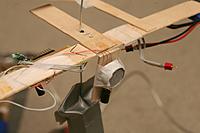 Views: 310
Views: 310 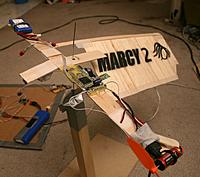 Views: 264
Views: 264 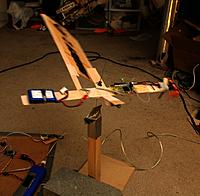 Views: 265
Views: 265 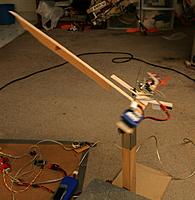 Views: 253
Views: 253 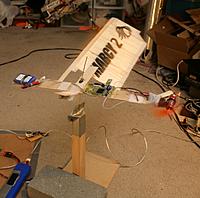 Views: 261
Views: 261  Views: 258
Views: 258 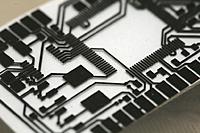 Views: 300
Views: 300 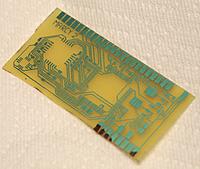 Views: 242
Views: 242 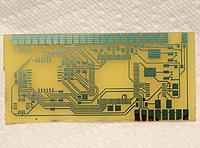 Views: 261
Views: 261 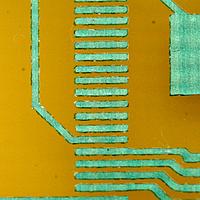 Views: 269
Views: 269  Views: 244
Views: 244 